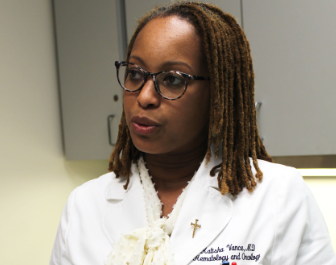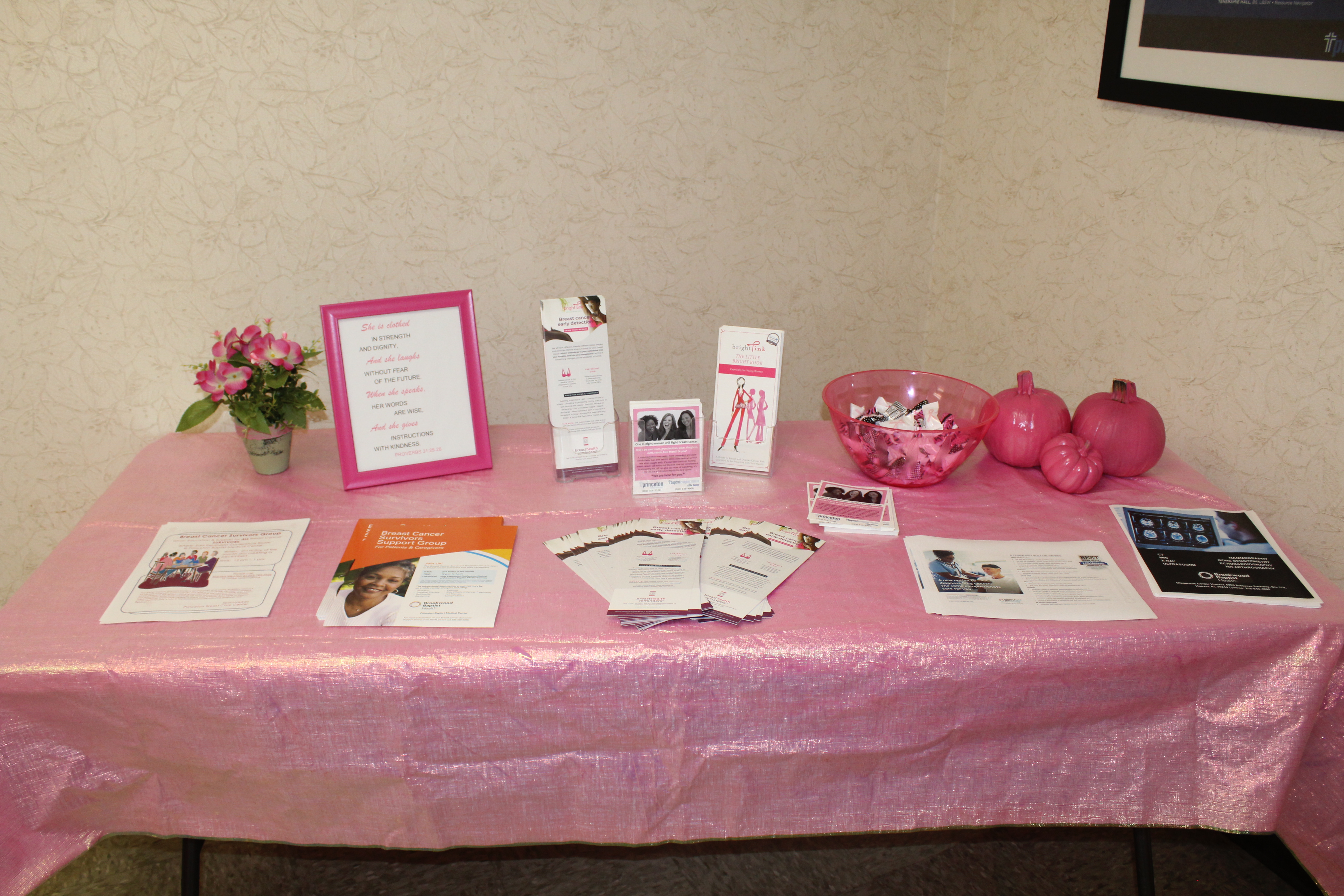By Ameera Steward
The Birmingham Times
During October, everyone is used to seeing pink ribbons, pink hats, pink cars along with the many activities and events surrounding breast cancer awareness month. But there is a side that may not be so pretty in pink for those who cannot afford mammograms—and Princeton Baptist Medical Center aims to change that by providing $99 mammograms this month.
Oncologist Katisha Vance, M.D., said the $99 will cover screening for patients who don’t have insurance.
“Unfortunately, we have lots of women who need to be screened but don’t have health [coverage],” she said. “This [$99 fee] allows a woman who needs a mammogram to walk in off the street, get the study done, and have radiologist read it and let her know if she has anything to be worried about.”
Mammograms are the gold standard test for detecting breast cancer, Vance explained, adding that the process is fairly easy. Patients are told to place each breast on a flat platform, where the breast is pressed from above as well as from the sides for “a sophisticated X-ray,” she said.
Also, it is important to note that if a woman is diagnosed with breast or cervical cancer in Alabama, she qualifies for Medicaid if she does not have insurance.
“I have, unfortunately, taken care of too many women over the past 12 years who have found masses in their breasts and … thought, ‘I don’t have any health insurance. I don’t know what to do about this,’” Vance said. “If [a woman] comes in through the emergency department, we can get the process going. … If [a patient gets] medical attention for what is obviously a breast cancer, then in this state we can get Medicaid for them, and that will cover their treatment.
“That means we are able to find breast cancers earlier, when they have a better prognosis—and that’s why it’s so important to do this screening in women.”
Age Limit
Over the years, questions have been raised about the age at which women should start getting mammograms. Many organizations recommend that women start screening at the age of 40; this is for an average-risk patient, someone who does not have a strong family history of breast cancer and hasn’t had radiation to the chest or another problem. Other organizations say women should begin getting mammograms on a regular basis at age 50 because most breast cancers—approximately 80 percent, Vance said—occur in women who are 50 and older.
For women with a family history of breast cancer, however, the guidelines are a bit different. If the patient has the genetic mutation BRCA1 or BCRA2, an abbreviation for BReast CAncer gene, doctors talk to those women about getting clinical exams in their 20s, Vance said. Additionally, those women should consider getting mammograms and MRI screenings of the breasts in their 20s.
“Those guidelines probably don’t get followed a great deal because I don’t think we screen enough women for BRCA1 and BRCA2,” Vance said. “You have entire families that know that they have those mutations, and those people probably do get screened, but we probably miss out on those who do not have a strong history of with the mutation. High-risk women should get screened earlier.”
Even those who are not BRCA1- or BRCA2-positive but are considered high-risk should start earlier. For example, if a woman’s mother was diagnosed with breast cancer at age 45, Vance suggests that she start her screenings 10 years earlier than when her mother was diagnosed.
Self-Exams
In addition to getting mammograms regularly, women should do breast self-exams regularly for early detection. Vance suggests that women do a self-exam once a month to check for changes in or problems with their breasts. According to breastcancer.org, “The more you examine your breasts, the more you will learn about them and the easier it will become for you to tell if something has changed. … Examine yourself several days after your period ends, when your breasts are least likely to be swollen and tender. If you are no longer having periods, choose a day that’s easy to remember, such as the first or last day of the month.” Vance adds that it’s best to check breasts in the shower or bathtub with soapy hands, so the hand can move easier around the breast.
Self-exams are important even if a woman has annual clinical breast exams done by a doctor or nurse practitioner because things can change in between those exams, so Vance encourages women to “do that [self-exam] once a month. … That’s fine. That’s all we need you to do.”
An ultrasound also can be used with a mammogram to screen women, especially if they’re young; it will reveal if the mammogram is showing a cystic (fluid-filled) or solid mass. An MRI can help, as well, but it should not be used in average-risk women because it is very sensitive and picks up everything, some of which “you don’t need to know about because they’re never going to cause a problem,” Vance said.
“Because breast cancer is talked about so much, it makes every woman a little bit worried if she feels something that is just a little off,” she added. “I still say get it checked by your doctor just to be sure. The majority of the time it may be nothing, but if something feels different, get it checked out.”
Reducing Risk
One way to reduce the risk of developing breast cancer or making it worse is by keeping your weight down, Vance said, explaining that estrogen is made not only in the ovaries but also in fat cells. According to the Susan G. Komen website, komen.org, “Estrogens are natural hormones that are important in sexual development and other body functions. Higher amounts of estrogen in the blood are linked to an increased risk of breast cancer in women after menopause. Researchers are studying a possible link to breast cancer before menopause.”
“So, if you are overweight with increased fat cells, … then your estrogen levels are going to be higher, and that’ll increase [your risk] for getting breast cancer,” Vance said. “One of the easiest things a woman can do is maintain a healthy weight.”
Additionally, breast cancer risk can be reduced by getting two and a half to five hours (150 to 300 minutes) of exercise a week, as well as not smoking.
“I can’t think of a single cancer [diagnosis] in which someone said, ‘Your smoking didn’t play into this,’” Vance said. “Never smoking is the best option. If you’re already a smoker, stopping will help.
“It’s very much about good self-care. I also think it’s important to emphasize that a whole lot of breast cancer is about genetics and environment. … I’m always very cautious about not placing blame on women when they develop breast cancer or when breast cancer comes back.”
Vance said Princeton Baptist wants to make sure as many women as possible get mammograms.
“It bothers me that so many women go to work every single day and have jobs that cover the bills, but their jobs don’t offer health insurance and because of that they can’t get the necessary preventive care they need,” said Vance.
Princeton Baptist Medical Center is offering $99 mammograms throughout the month of October—Mondays through Thursdays from 7:30 a.m. to 4:15 p.m. and Fridays from 7:30 a.m. to noon. To schedule an appointment, call 205-783-7100 or visit www.brookwoodbaptisthealth.com.














